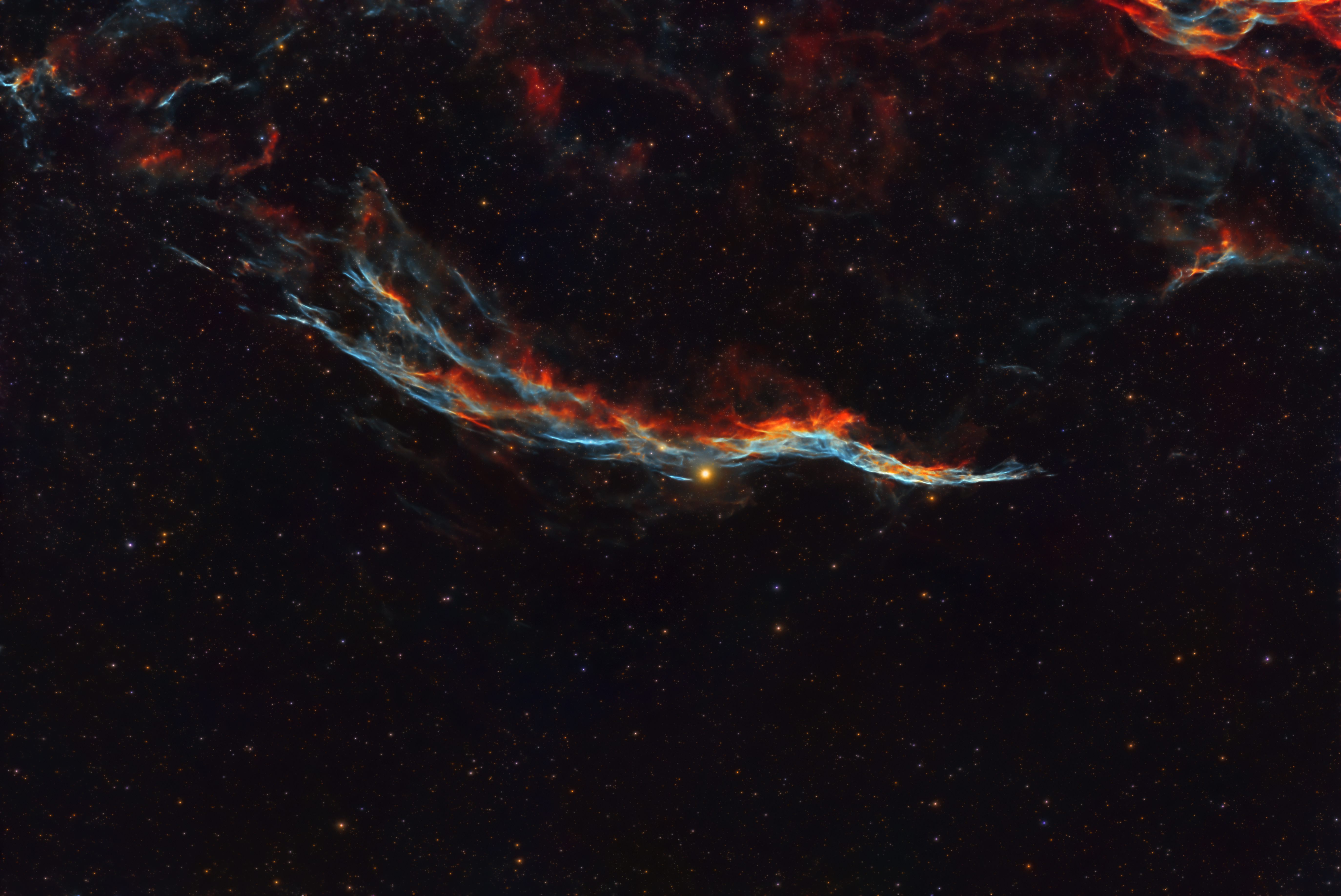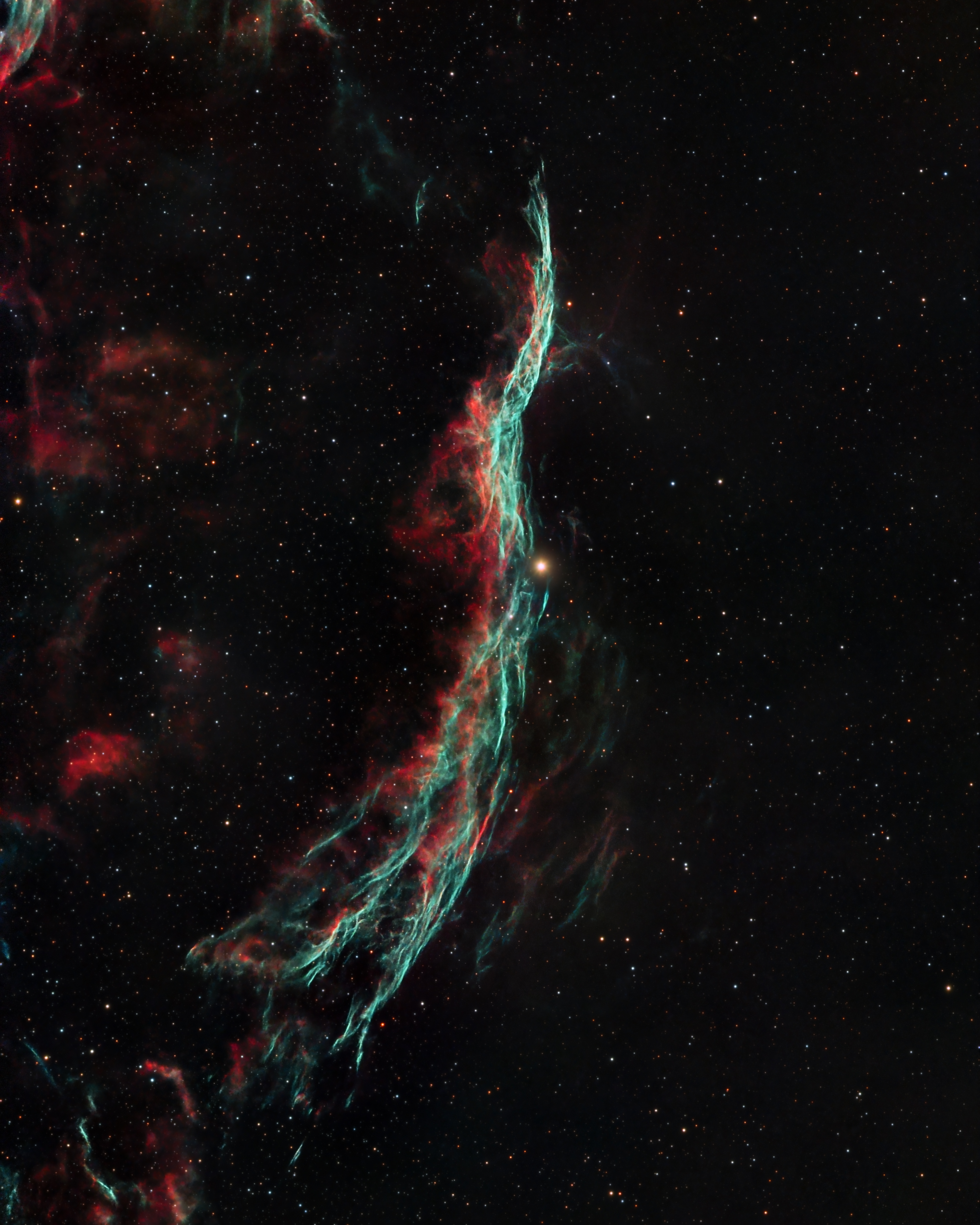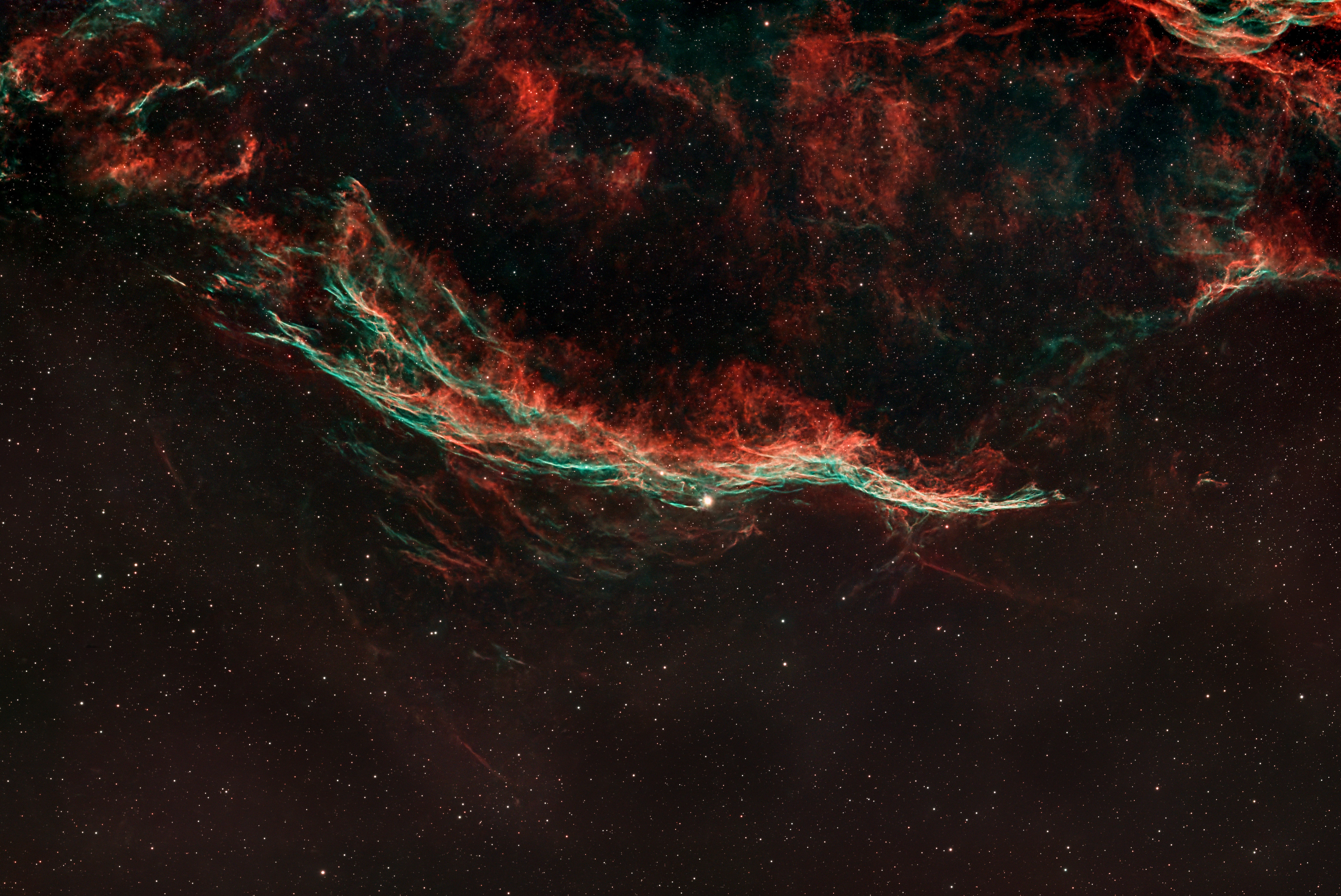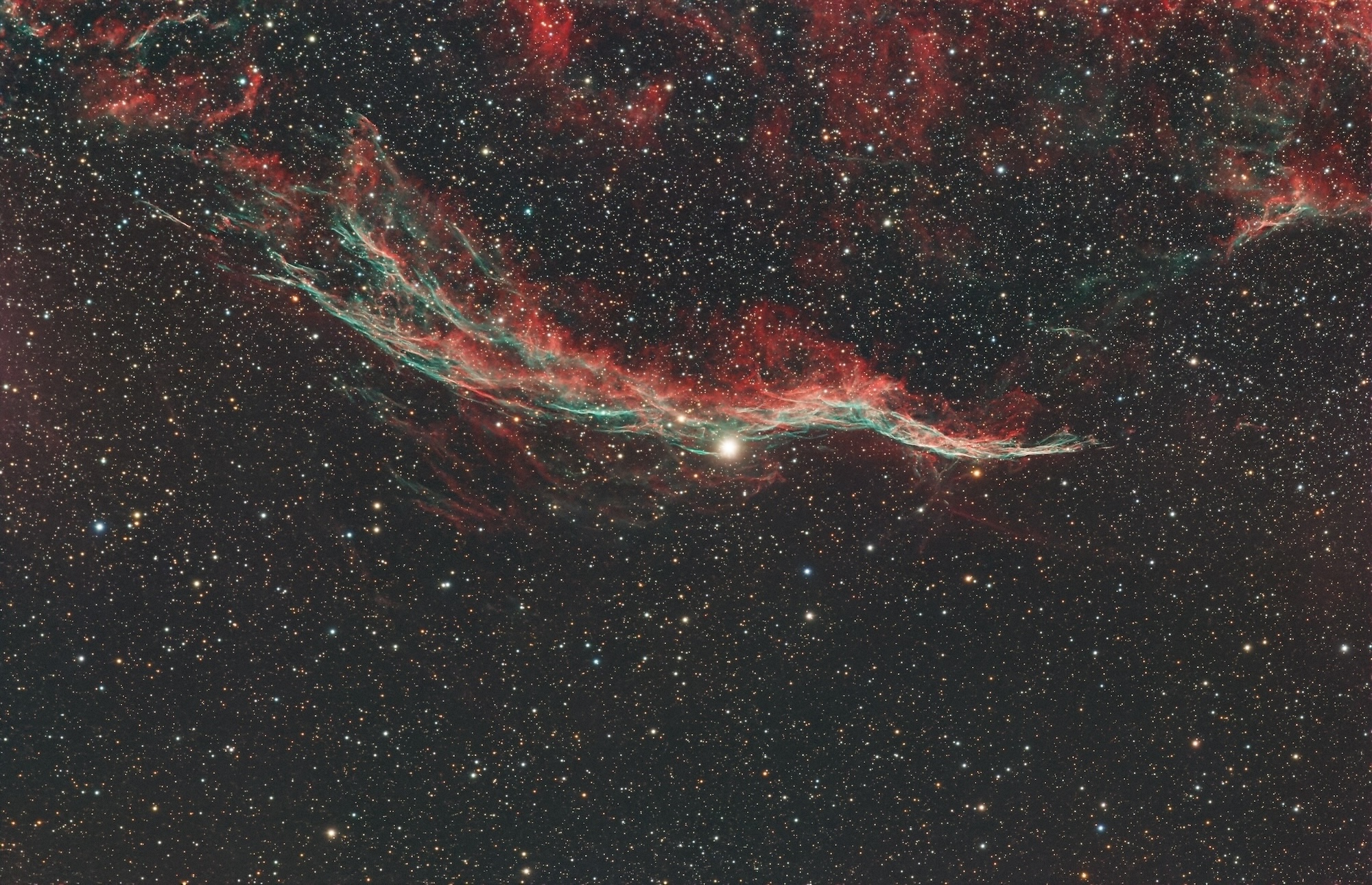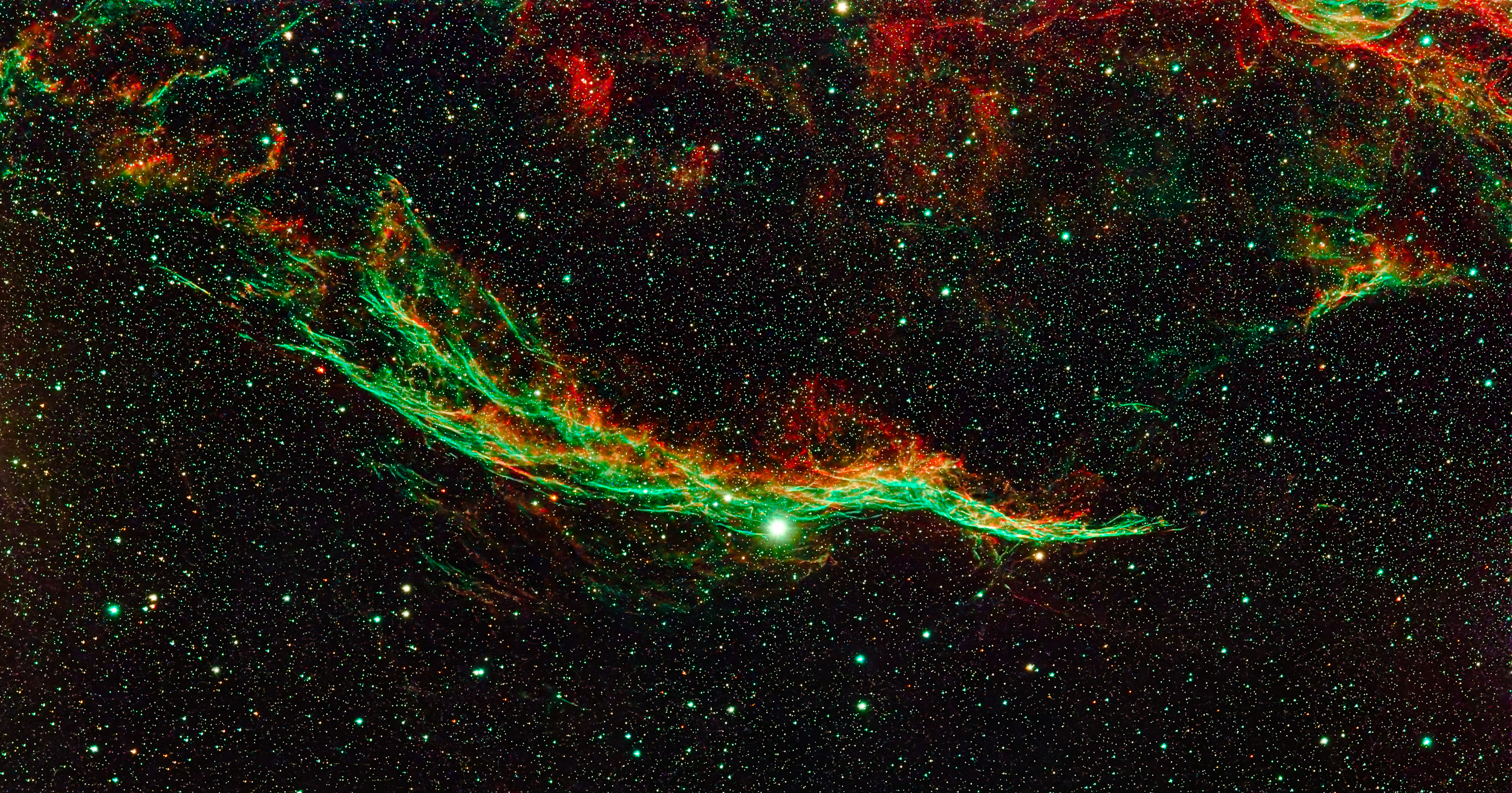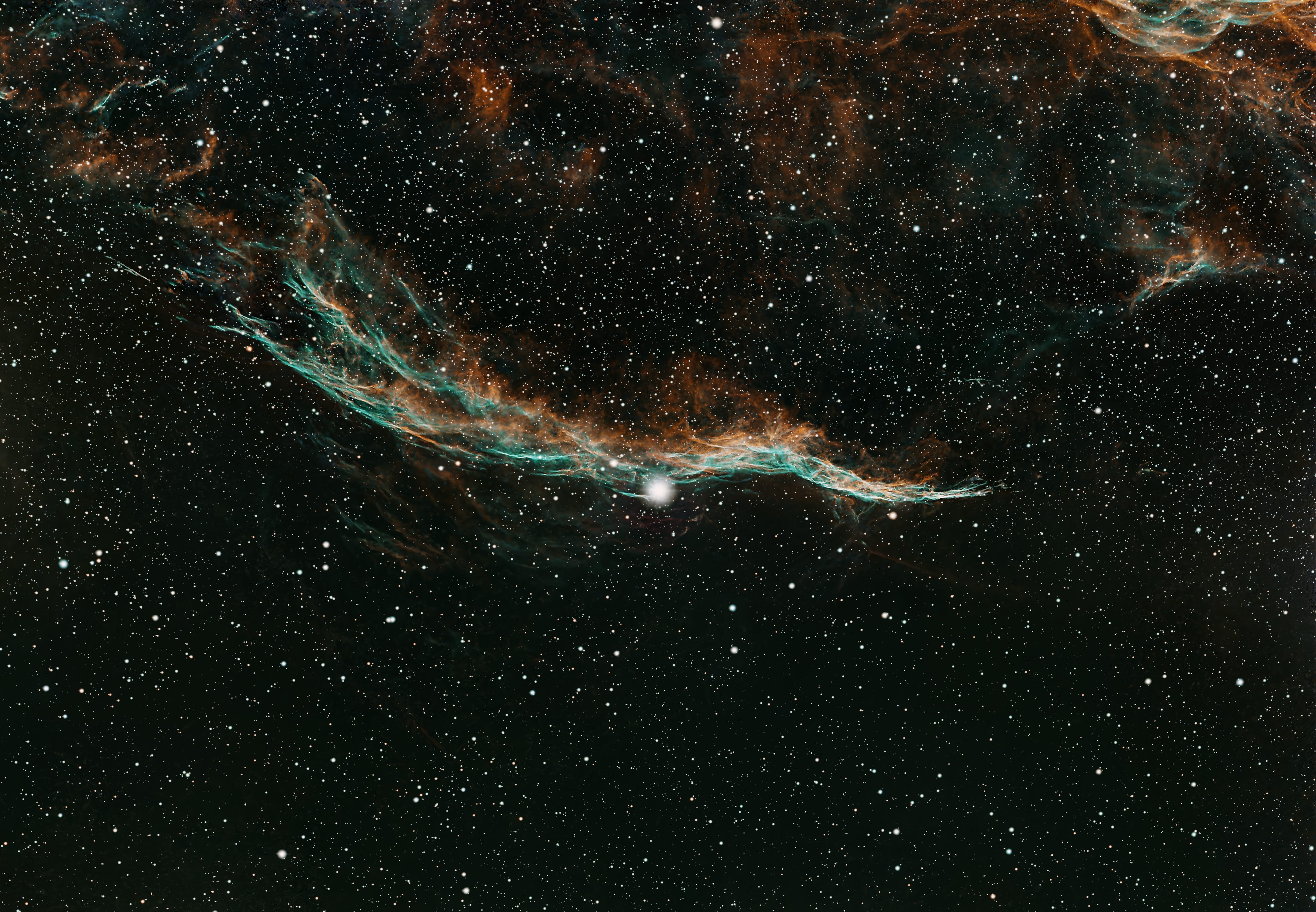I've hosted several of these experiments before and always enjoy seeing what you all come up with! I have 32 hours worth of data on NGC 6990, or Caldwell 34, the beautiful witches broom nebula available for processing at your own will. The data itself is a mixed bag between different exposure lengths, filters and year. For my own rendition, I used PixInsights image integration module to simply average three stacks together, one for Optolong UV/IR cut, one for L-eNhance and one for L-Quad. However I know some people claim mixing various filters like this is redundant because of the narrowband nature of light pollution filters, it doesn't contribute to the final image when you integrate narrowband data with broadband data such as through an UV/IR filter. In total these are the integrations for each filter:
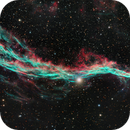
NGC 6990 (Witches Broom) Multi-Year Project
UV/IR: 7h
L-eNhance: 19.33h
L-Quad: 8h
I have made available all of the files from my PixInsight WBPP session, in which there are the 3 master lights. I used GraxPert for gradient reduction on all three individual before I imported them into PixInsight and processed further.
NGC 6990 Fabian Butkovich

As always I'd love to know the detailed workflow and steps you used to better build my own understanding of processing. Below is a screenshot of all the various steps I used.
Good luck and happy processing!

NGC 6990 (Witches Broom) Multi-Year Project
UV/IR: 7h
L-eNhance: 19.33h
L-Quad: 8h
I have made available all of the files from my PixInsight WBPP session, in which there are the 3 master lights. I used GraxPert for gradient reduction on all three individual before I imported them into PixInsight and processed further.
NGC 6990 Fabian Butkovich

As always I'd love to know the detailed workflow and steps you used to better build my own understanding of processing. Below is a screenshot of all the various steps I used.
Good luck and happy processing!
